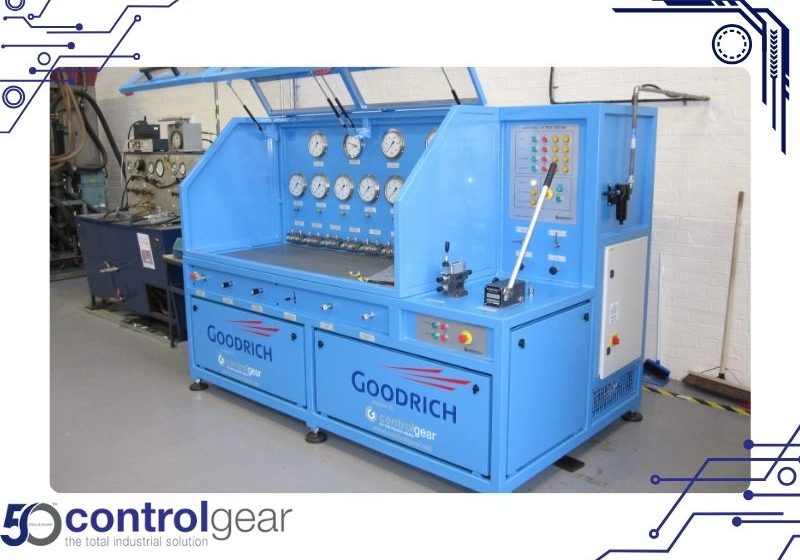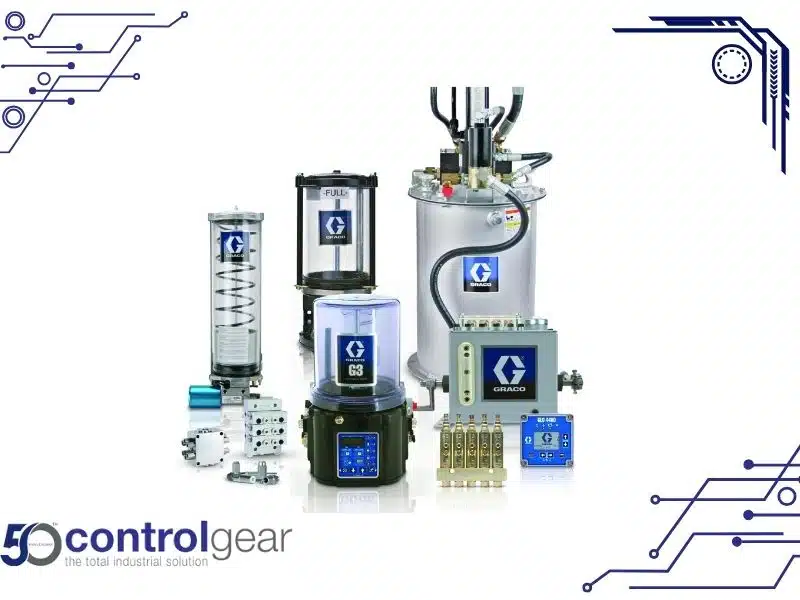
What is a Hydraulic System?
A hydraulic system uses the power of high-pressure fluid to make machinery work. This basic concept comes from Blaise Pascal and its first real-world application from Joseph Bramah, who invented the first hydraulic press at the start of the Industrial Revolution. Hydraulic systems are widely used in many industries today, turning the power of fluids into mechanical actions.
For those using hydraulic equipment or wanting to learn about hydraulics, this guide explains, in simple terms, how hydraulic systems work. It covers the parts involved, how fluid mechanics operate, and what new advancements in hydraulics are on the horizon.
How do Hydraulic Systems Work?
How Pressure Moves in Systems
Imagine liquid moving through pipes, stretching across a factory floor, or, fitting inside a small robot used in surgery. Hydraulic systems use the rules of how fluid pressure from one point is transmitted to another to allow an operator to accomplish significant work like making things move or lifting heavy loads.
Why Liquids are Great for this
Fluids, like water or oil, are incompressible – they do not get smaller when you squeeze them. In hydraulic systems, any change in pressure is transmitted throughout the fluid equally without it becoming deformed.
Controlling How Things Move
Hydraulic systems can do many things by understanding where to transmit the liquid and how to control the pressure. They can lift heavy loads or control how fast something spins.

The Basic Components that Make Up a Hydraulic System
To understand hydraulics we need to look at the main hydraulic components: every piece is vital for making the system work well and safely.
Hydraulic Fluid
Hydraulic fluid has two big jobs: it pushes things to move and it keeps everything running smoothly. Whether the incompressible fluid is oil or water, it carries the power from the pump and helps cool things down, preventing damage.
Hydraulic Pump
The pump converts mechanical energy into hydraulic energy by forcing fluid from the reservoir into the rest of the system. Different types of hydraulic pumps, such as gear pumps, vane pumps, and piston pumps, each offer unique advantages.
Hydraulic Control Valve
Valves control the direction of the hydraulic fluid flow and regulate the system’s volume and hydraulic pressure. They ensure the fluid flow is always moving in the right direction at the right time.
Types of Hydraulic Valves
There are many types of hydraulic valves:
- Directional control valves – spool valves and poppet valves direct the fluid to the correct actuator.
- Flow control valves – manage the volume of fluid passing through the system.
- Pressure control valves – maintain the pressure at a safe level.
Reservoirs, Heat Exchangers, and Filters
A reservoir or hydraulic cylinder holds the hydraulic fluid and makes sure there is always enough for the pump. Heat exchangers keep the system from getting too hot, and filters remove any dirt so the fluid stays clean.
Actuators
Mechanical devices that convert hydraulic energy into mechanical energy.
- Hydraulic cylinders create linear movement by converting the hydraulic energy back to mechanical energy.
- Hydraulic motors convert the hydraulic energy into rotational mechanical energy.
How Hydraulic Systems Work
At the heart of a typical hydraulic system lies the principle of fluid pressure transmission. Consider a simple hydraulic setup used in a vehicle’s brake system. When the driver presses the brake pedal, a piston within a master cylinder exerts force on the brake fluid. This force transfers through the fluid in brake lines to actuate pistons at the brake callipers, forcing the brake pads against the rotor to slow or stop the vehicle.
The master cylinder acts as the system’s pressure generator, converting mechanical force from the pedal into hydraulic pressure. The brake fluid acts as the incompressible medium that transmits this pressure efficiently across the system while the brake callipers, acting as actuators, use this pressure to achieve the desired mechanical action – engaging the brake pads with the rotor.
This example illustrates how hydraulic systems leverage fluid power to accomplish tasks requiring significant force in mechanical systems.
The Role of Hydraulic Fluid
The hydraulic fluid acts as the medium to transfer power. The primary purpose of hydraulic fluid is to provide a means for power to be converted, transferred, and controlled within hydraulic machinery. As hydraulic fluid is incompressible, it effectively transmits force from one point in the hydraulic system to another.
Hydraulic Fluid | Key Functions and Characteristics
The function of a hydraulic fluid goes beyond simple force transmission. It acts upon every part of the system, such as the hydraulic cylinders and hydraulic pumps, serving several critical roles.
Hydraulic Fluid | Diversity and Adaptability
Modern hydraulic fluids, mineral-based or synthesised, are designed to perform under various operational stressors. These include wide temperature ranges, varying pressures, and the need to resist environmental degradation.
Using Hydraulic Power in Different Ways
Hydraulics are used in applications across diverse industries. Although hydraulic circuits work through the same basic principles, each is tailored to the specific needs of the machine it powers.
Heavy Industry and Construction
Operating earth movers, cranes, and hydraulic presses are all part of a day’s work for hydraulics in heavy industry and construction. These applications demand enormous power and absolute precision, and hydraulic circuits are well-equipped to provide and complement existing mechanical and electrical systems.
Common Types of Hydraulic Machinery
- Bulldozers and excavators rely on hydraulic power systems to operate their powerful arms and buckets.
- Hydraulic presses are used to form and shape metals with immense force and precision.
- Pile drivers use hydraulic power to hammer piles into the ground quickly and accurately.
Transportation and Automotive Industries
Hydraulic systems function and perform in various aspects of transportation from aircraft landing gear to the brakes on commercial trucks.
Aerospace and Defense
In the high-stakes aerospace and defence sectors, hydraulic power is critical for operations and safety.
Hydraulic Power Packs
Hydraulic power packs are used in aerospace applications, providing the force required to operate various systems in an aircraft.
Armoured Vehicles
The suspension systems of armoured vehicles often use hydraulics to manage weight distribution and ensure a smooth, stable ride.
Manufacturing and Precision Engineering
From Computer Numerical Control (CNC) machines to robotics, hydraulics drive many diverse precision automation and manufacturing technologies.
CNC Machine Tools
Hydraulic systems power the clamping devices and work-holding mechanisms in CNC machines, providing the stability required for high-precision work.
Robotics
Hydraulic systems can help to control the different movements and processing tasks in industrial robots, allowing for multi-axis movement with a high degree of control.
Pros and Cons of Hydraulic Systems
Understanding the Trade-offs
Hydraulic systems are powerful but not perfect. Let us examine the pros and cons of using hydraulics.
The Benefit of Power
- Hydraulic systems control hydraulic pressure and flow to do a lot of work without being too big or heavy. It means they are often better than mechanical or pneumatic systems for many jobs.
The Problem of Leaks
- One big issue is leaks from the hydraulic reservoir holding the confined incompressible fluid. Leaks can lead to loss of fluids and energy from one point to another in the hydraulic circuit causing dirty work areas and harming the environment.
- Hydraulic systems also struggle to cope with massive temperature changes and need careful upkeep to avoid issues.
The Future of Hydraulic Systems
E-Hydraulics and Smart Hydraulics
Combining electronics with hydraulic systems has created a powerful mix called e-hydraulics. This combo brings the best of both worlds – precise control from electronics and the strong performance of hydraulics. Expect to see many new e-hydraulic applications.
Making Things Better with AI and Machine Learning
AI and machine learning can do amazing things and will be found in hydraulic systems more and more. These new technologies learn from a lot of detailed performance data from existing smart hydraulic systems. AI-integrated machines will work better by making their own decisions and requiring less repair.
What Is a Hydraulic System? | Key Takeaways
Hydraulic systems have become one of the most vital tools in today’s industries allowing a lot of useful work to be done. The driving force behind hydraulics is the flow and pressure of hydraulic fluids guided by the principle of Pascal’s law. In simple terms, Pascal’s law states that when pressure is applied to a fluid at any point, it distributes that force equally in all directions.
This fundamental concept explains why fluids are used to transmit energy in various applications, from the hydraulic presses in which Joseph Bramah applied the principle of Pascal’s law to the complex systems that control where fluid flows in machinery today.
Need help with hydraulics? At Control Gear, we have years of experience with various hydraulic system requirements and solutions to help support industries that depend on the power of hydraulics. Contact us today!
